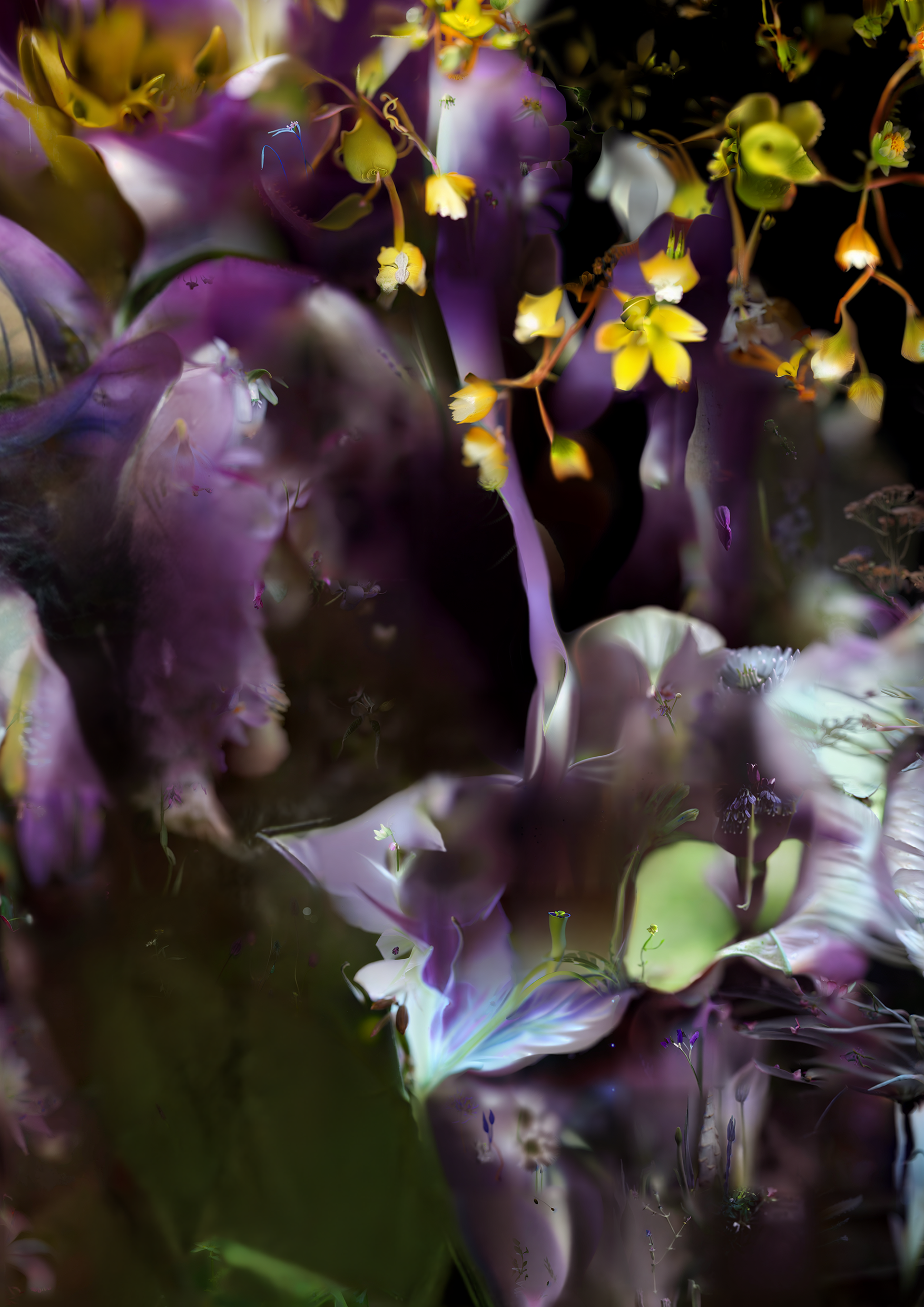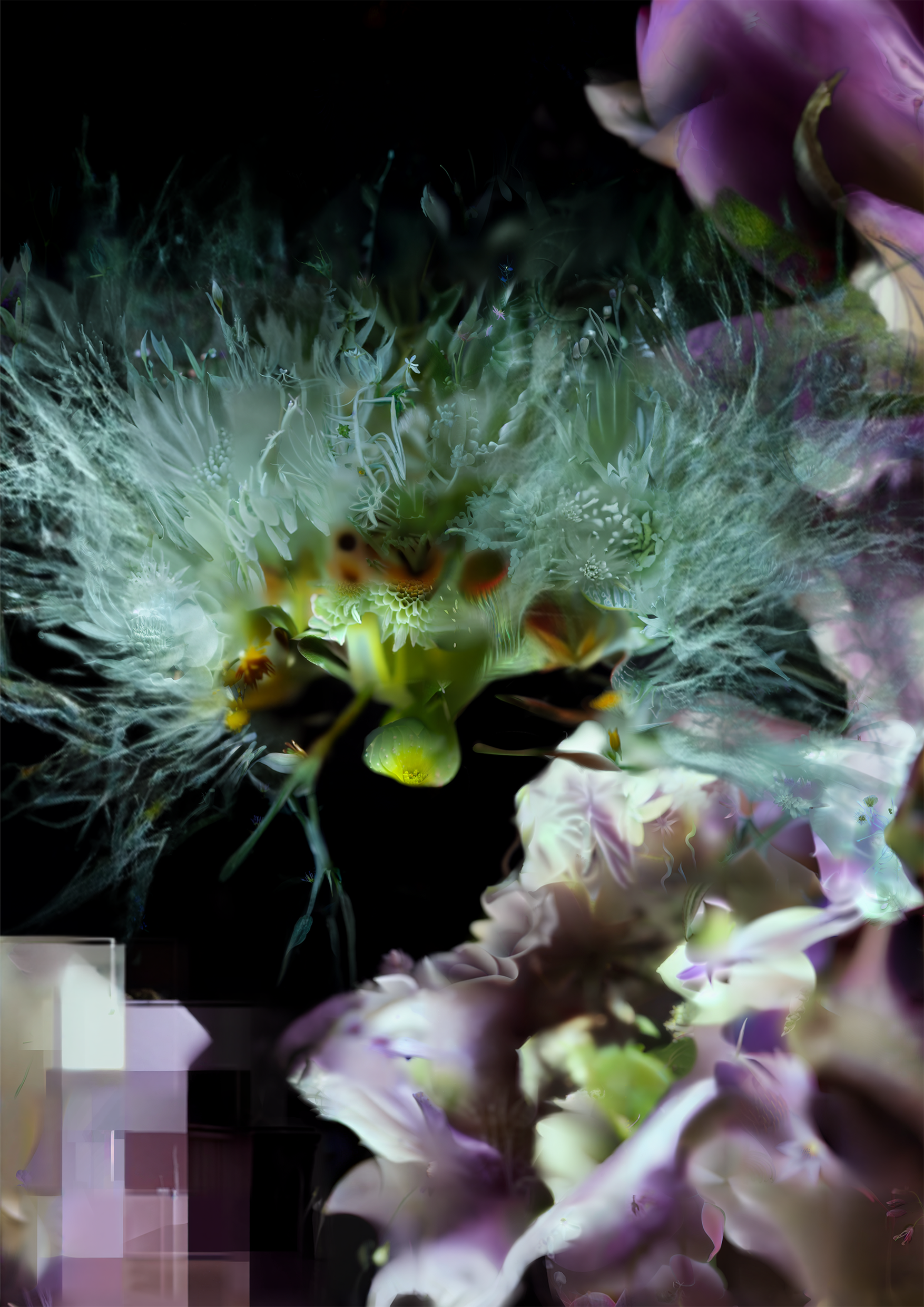
83 Seeds from a Vanishing Mountain #5
Digital images, custom generative adversarial networks (GAN), NFT, and Ethereum blockchain, 2023
Private collection
Artists Sofia Crespo and Anna Ridler here combine their shared interest in botany, experimental photography, and generative systems. The underlying digital image is composed of artificially generated versions of 83 plant species native to the Swiss Alps. The species are at risk of disappearing due to climate change.
Rather than document these endangered plants as they currently exist, the artists used generative adversarial networks (GANs) to create imaginative variations of how these species might adapt and evolve. Just as seeds contain genetic potential for new traits, the artists produced new visual possibilities by employing “seeds” (data points) in digital latent space, the underlying mathematical structure where AI generates images. Each plant species was generated individually, manually altered using software like Photoshop, and eventually combined into this floral arrangement using a process akin to digital collage. The results reveal subtly uncanny flowers—familiar yet impossible. The final image was subdivided into 25 slices, each becoming a unique artwork stored on the blockchain.
Art created using autonomous systems like computer algorithms, AI models, or rule-based processes where the artist sets up initial parameters but then allows the system to independently produce or contribute to the
final artwork. The artist designs the process rather than directly creating every element, embracing randomness, complexity, and emergence to produce results that often could not be fully predicted beforehand.
A type of machine learning system where two AI programs compete to improve each other. Both programs are trained on a dataset of text, images, or sound. One program (the generator) tries to create convincing artificial data, while the other (the discriminator) judges its authenticity. Through this contest, the generator learns to produce increasingly realistic outputs.
An abstract, multidimensional space that organizes essential features extracted from the data used to train machine learning models. We can think of latent space like an organized warehouse where complex information (images, text, etc.) is stored in a simplified form and similar items are positioned close together. This mapping of features allows the AI (artificial intelligence) to understand patterns and relationships embedded in the data and use this knowledge to generate new content.
The ability of a computer to simulate human intelligence by performing tasks such as learning, reasoning, problem-solving, and understanding language. AI systems can analyze data, recognize patterns, make predictions, and adapt their behavior based on experience.
A digital ledger that stores information across many computers instead of one central location. Each new record links to previous ones, forming a secure chain of “blocks” (packages of encrypted data) that is extremely difficult to alter or hack. Blockchain technology has been used to create cryptocurrencies and non-fungible tokens (NFTs) due to its ability to securely record transactions without requiring the authentication of a centralized regulatory body.

